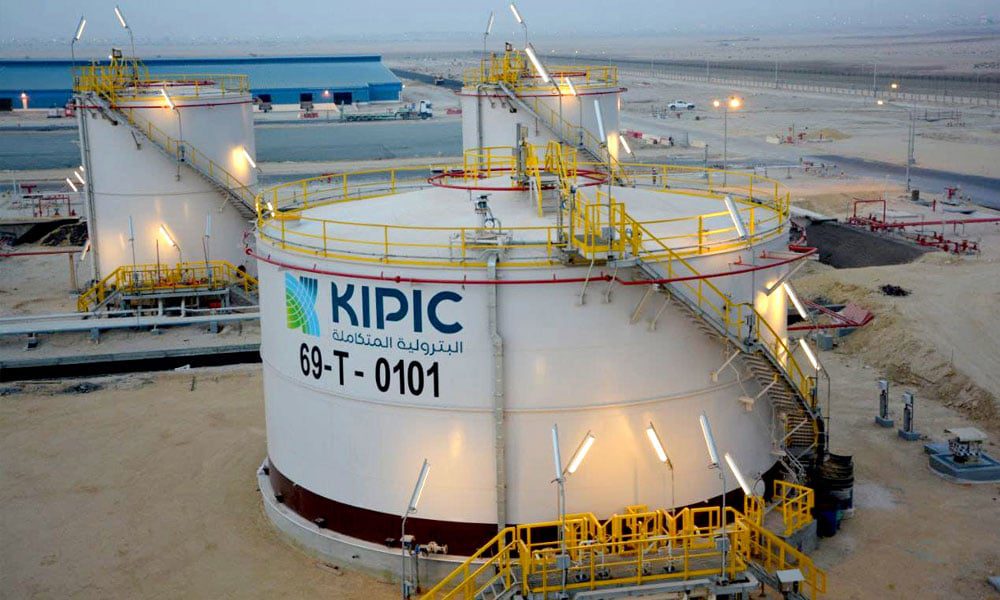It seems that the exports of the Kuwaiti Al-Zour refinery will witness a decline during the coming period, despite expectations of an increase in supplies to Europe and Asia to compensate for Russian fuel.
The crude distillation unit at the refinery of the state-owned Kuwait Petroleum Corporation was closed due to a technical problem, according to information seen by the specialized energy platform, quoting the Argus Media platform.
Last March, KPC started operations in the second phase with a capacity of 205,000 barrels per day, at Al-Zour refinery, which has a capacity of 615,000 barrels per day.
The Kuwait Petroleum Corporation said that the third and final phase of the refinery will be completed “within the next two months.”
When the refinery becomes fully operational, it will expand refining capacity in Kuwait from 800,000 bpd to 1.415 million bpd.
Duration of shutdown of the crude distillation unit
Argos reported that the second crude distillation unit has been closed since last week, without confirming further details and a timeline for the unit’s return to operation, although the shutdown could continue into May.
More than one distillation unit could be down for up to 3 weeks, according to other market participants.
The Al-Zour refinery regularly exports low sulfur fuel oil, and provided up to 1.79 million tons (11.5 million barrels) of low sulfur fuel oil for loading during the period from November 2022 to May 2023.
Its last sale was about 100,000 tons of low sulfur fuel oil for loading April 7-8, via a tender that closed 3 weeks ago on March 21; A shipment of 60,000 tons may have been sold.
The refinery has not offered more low sulfur fuel oil since then, although it cannot be confirmed whether these events are related to the crude distillation unit shutdown.
The refinery has also previously offered and sold low sulfur diesel and jet fuel.
Expectations of an increase in Al-Zour refinery exports
The imminent increase in low sulfur fuel oil exports from the new Al-Zour refinery is expected to fundamentally change global trade flows, with ripple effects likely to be seen particularly in the European and Asian fuel oil markets.
Much of Kuwait’s low sulfur fuel oil production is likely to make its way east to the world’s largest bunkering hub in Singapore, S&P Global reported.
With the commissioning of the second crude distillation unit in early March, the Az-Zour refinery’s processing capacity doubled to 410,000 barrels per day, and exports of low sulfur fuel oil rose to an average of at least 300,000 metric tons per month, from 100,000 metric tons in November. November, when the first distillation unit started operating.
Low sulfur fuel oil exports are likely to double again from current levels in the coming months, with increased operations at the second distillation unit.
With the commencement of operations at the third distillation unit expected later in 2023, export volumes of low sulfur fuel oil are expected to swell to close to one million metric tons per month.
Raise the selling price of Kuwaiti oil
In another context, Kuwait raised the official selling price for Kuwaiti export crude to Asia in May by 25 cents from the previous month, to a premium of $2.40 a barrel above the Oman/Dubai average, according to information reported by Reuters and seen by the specialized energy platform.
Kuwait set its May official selling price for very light Kuwaiti crude at $2.50 a barrel over Oman/Dubai, down 10 cents from the previous month, according to the pricing document.
Kuwaiti Oil Minister Badr Al-Mulla had announced – in a press statement issued on April 2, 2023 – that his country would implement a voluntary cut of 128,000 barrels per day, as part of a precautionary measure by several countries in the OPEC + alliance.
Hence, Kuwait’s production, from May to the end of 2023, will be about 2.548 million barrels per day, down from 2.42 million barrels per day.
The following graph – prepared by the specialized energy platform – shows Kuwaiti oil production since 2019:


Leave a Reply